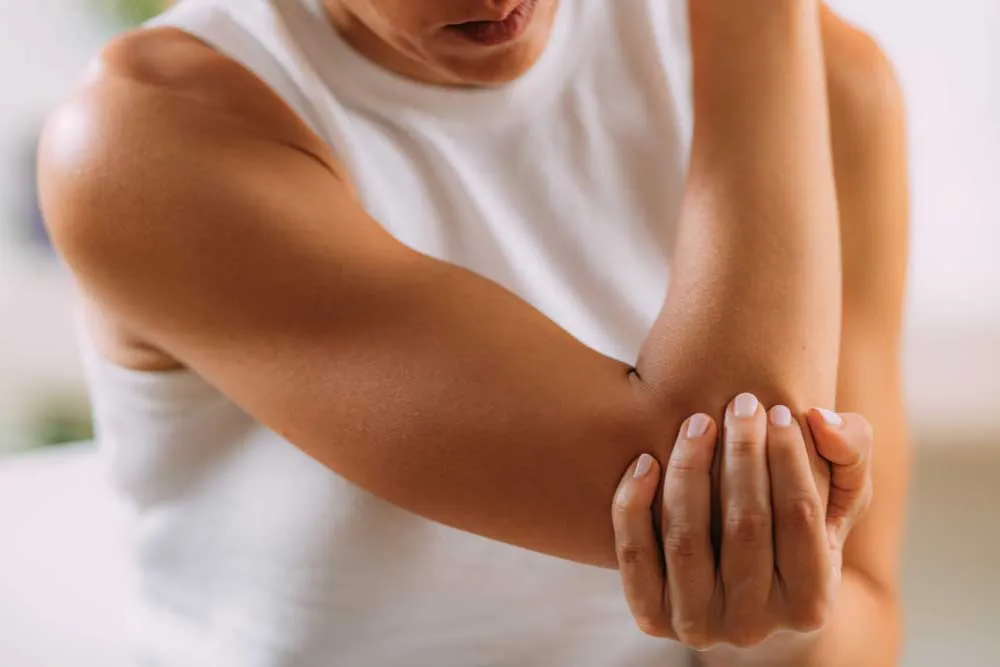
Tennis elbow is usually caused by overuse of the forearm muscles but may also be caused by direct trauma such as with a fall, car accident or work injury.
Tennis elbow is commonly seen in tennis players, hence the name, especially when poor technique is used while hitting the ball with a backhand stroke. Other common causes include any activity that requires repetitive motion of the forearm such as painting, hammering, typing, raking, weaving, gardening, lifting heavy objects and playing musical instruments.
The signs and symptoms of tennis elbow can include the following:
Golfer’s elbow (or medial epicondylitis) is a pain which affects the inside of the elbow. It is less common than Tennis elbow which affects the outside of the elbow. Golfer’s elbow doesn’t just affect people who play golf. The condition is thought to be caused by repetitive use of the muscles of the wrist and forearm.
Much like tennis elbow, for many years, the condition was thought to be caused by inflammation in and around the tendon which connects the wrist and forearm muscles to the elbow bone. Recent advance in research, however, show that the pain is caused by degeneration in the tissues rather than an inflammatory cause. It isn’t known exactly why some people’s tendons react in this way, and others don’t.

In the early stages of Golfer’s elbow, it is a good idea to rest from the aggravating activity. Ice and anti-inflammatory medication may be helpful in the very early stages, particularly if you notice any swelling. We now know that a specifically designed exercise program which gradually loads the tendon is one of the best methods of treatment.
Your physiotherapist may also suggest, stretching, taping, an elbow support or acupuncture to assist with treatment. It can sometimes be useful to treat other areas of your body that we know are often connected, such as your neck.
